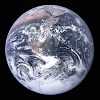Venus is the second planet of the solar system. It is also known as earth twin, morning star and evening star and it’s also known as the jewel of the sky. It is only planet which rotates clockwise. The properties of venues are far while the density is similar to the earth as in the presence of atmosphere. The atmosphere of Venus is very poisonous and the surface of Venus has only been photographed by the venire probes. It is very different from the earth because it has no oceans and its surrounded has heavy atmosphere composed by carbon dioxide with virtually no water vapor and its cloud are composed of sulfuric acid droplets. The thick clouds lock the heat while the surface rages with active volcanoes. The surface of Venus is often described as a stormy desert full of many craters and very active volcanoes.

History
Venus is believed to be discovered by Galileo Galilee in 1610
and his crude telescope realized that the Venus goes through the moon. Venus is
one of the five classical plants that visible to the naked sky and the second
brightest celestial object in the night sky but only the moon outshine. Solar
system formed 4.568 billion years ago from the gravitational collapse of a
region with a large molecular cloud. For
thousands of years she had fascinated curious views from the scholars of
antiquity and modernity to mere mortal poets. Edmond Halley realized in 1705
that repeated sightings of a comet were recording the same object returning
regularly once every 75-76 year. This was the first evidence that anything
other than the planets orbited the sun. In roman mythology Venus is the god of
love, beauty and fertility but she was the roman counterpart to the Greek
Aphrodite. In Greek mythology Venus is the god of victory, fertility and even
prostitution. But the Maya civilization given high regards to the Venus and
they should be printing the figure of Venus in her own calendars. Ancient
Egyptians were thinking that Venus is actually two separate objects a morning
star and evening star. The early mathematician Pythagoras was one of the first
recognizer which recognizes that morning star and evening star is a same object.

Composition
Venus is a terrestrial planet in the solar system and it has
no moon. The composition of Venus is similar to the earth with a core of metal,
a mantle of liquid rock and its outer crust is made of solid rock but Venus is
often referred to earth because it’s have same size, mass, gravity and overall
composition. The surface temperature of Venus is 462.c and its
average orbital period is 126,074 km/h. The interior of Venus is losing as much
heat as the earth and they could be the reason of Venus doesn’t have magnetic
field. The equatorial circumference is 38,025 km and its radius is 6,052 km. The
surface of Venus is hot enough to melt lead and no spacecraft have survived on
the surface for longer than a few hours. The one big difference between our
Venus and earth are the lack of plate tectonic in Venus but some another reason
plate tectonics on Venus shut down billions of year ago. The solar day length
is 117 earth days and its year length
is 225 year days. Venus has an iron core as same size around the earth at
approximately 3,000 km. The most earth like atmosphere in the solar system
occurs 30 to 40 miles above the surface of Venus. Both oxygen and hydrogen rise
above the heavier gas layer covering the ground and the pressures are similar
to our planet. Roughly two third of the Venusians surface is covered by flat or
smooth plains that are marred by thousands of volcanoes and six mountainous
region make up about one-third of the Venusians surface.
Relation With Solar System
The distance between Venus to sun is 108.2 million km and the
radius of the sun is 6051.8 km. But the distance between earths to Venus is
101.44 million km. Although Venus is not the closest planet to the sun, its
dense atmosphere traps heat in runway version of the greenhouse effect that
warms the earth. The sun occupies 10% volume of sphere with radius but earth
volume is roughly one millionth that of the sun. Venus is very unusual planet
because it spins the opposite direction of earth and most other planet. And its
rotation is very slow because it takes about 243 earth days to spin around just
once. The Jupiter is the largest planet of which 5.2 AU from the sun and it has
a radius of 0.00047 AU. The atmosphere is heavier than the other planet leading
to a surface pressure that over 90 times that of the earth and similar to the
pressure that exists 3,300 feet deep in the ocean.

Some Amazing Facts





0 Comments